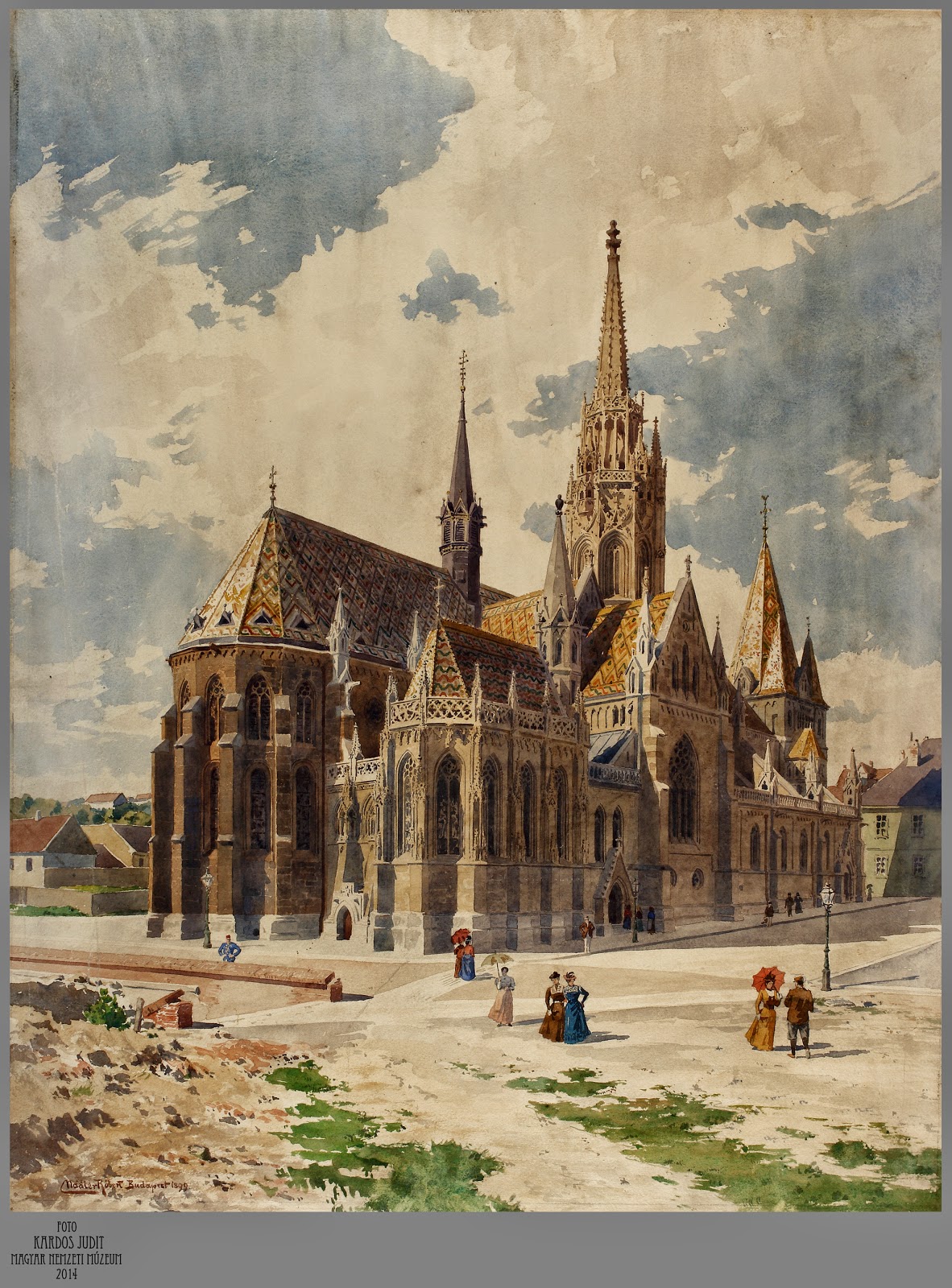In this post, I would like to call attention to a little-known medieval textile object at the Museum of Applied Arts, Budapest and also to an important exhibition in Pannonhalma, where the textile is currently on view.
The object in question is a 14th century altar frontal (antependium) with the figures of the Virgin and Child, St Benedict and St. Chrysogonus. Previously it was thought to date from the late 15th century, and it was little studied, but recent research shed light to its origins: the object in fact dates from around 1360, and originates from the Church of the Benedictine Monastery of St Chrysogonus at Zadar. A Benedictine donor can be seen kneeling next to the throne of the Virgin - probably one of the abbots of the monastery. The antependium entered the Museum of Applied Arts along with the collection of Bishop Zsigmond Bubics at the beginning of the 20th century. Similar altar frontals - mostly made in Venice - are known from other churches in Zadar and in the region. One of these works, known as the Veglia Altar Frontal is now at the Victoria and Albert Museum, and was likely designed by Paolo Veneziano around 1330. That piece comes from the cathedral of Krk in Dalmatia (known as Veglia in Italian).
If you would like to know more on the altar frontal in Budapest, read a recent study on it by Silvija Banić on academia.edu.
The Budapest altar frontal is currently on view (after a recent conservation treatment) at an exhibition organized by the Benedictine Arcabbey of Pannonhalma. Titled Saint Benedict and Benedictine Spirituality, the exhibition is on view at the new Abbey Museum until the end of September.
The exhibition allows an insight into the 1500-year-long history of Benedictine mentality through assorted works of art from the collections of the Benedectine Abbey of Lavantall, the Archabbey of Pannonhalma, and other museums. The most significant works of art in the exhibition are medieval liturgical objects, including ones which were taken from the treasury of St. Blasien Monastery in Germany to Carinthia after the provisions of Joseph II: a 12th century chasuble decorated with scenes from the Old and the New Testament, and the monumental Adelheid-cross decorated with gems, which had been originally commissioned in the 11th century by the wife of Hungarian king Saint Ladislaus, and which contains a splinter of the True Cross.
 |
| Adelheid-cross, St. Paul im Lavanttal |
I haven't seen the Pannonhalma exhibition and its catalogue yet, but I may yet write a review of it, if time permits - perhaps a comparative review with the recent Benedictine exhibition organized in Prague.
















